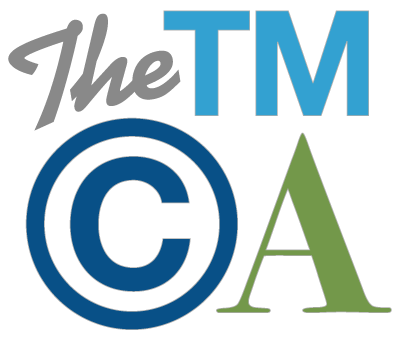Trademark Abandonment – Round Up Your Trademark Use Intentions
A trademark will be deemed abandoned under Section 1127 of the Lanham Act when the mark’s use has been discontinued “with intent not to resume such use.” Proof of non-use for three consecutive years will give rise to a presumption of abandonment, which can be rebutted by evidence of plans to resume use of the mark.
What constitutes sufficient evidence of an intent to resume use of a trademark?
 In a recent decision by the Court of Appeals for the Fifth Circuit, the owner of the trademark COWBOY LITTLE BARREL for bourbon was unsuccessful in overturning a jury verdict of abandonment due to insufficient evidence concerning the reasons for the lack of use and plans to resume use. Allied Lomar, Inc. v. Lone Star Distillery, LLC.
In a recent decision by the Court of Appeals for the Fifth Circuit, the owner of the trademark COWBOY LITTLE BARREL for bourbon was unsuccessful in overturning a jury verdict of abandonment due to insufficient evidence concerning the reasons for the lack of use and plans to resume use. Allied Lomar, Inc. v. Lone Star Distillery, LLC.
According to U.S. Patent and Trademark Office records, Allied claimed first use of COWBOY LITTLE BARREL in August 1995. It obtained a registration in 2003 and filed maintenance documents in 2009 and in 2013, alleging current use of the mark in commerce at those times.
In 2015, Lone Star Distillery, LLC (now doing business as Garrison Brothers Distillery), filed a cancellation proceeding against Allied’s registration at the Trademark Trial and Appeal Board, triggered by a refusal of its COWBOY BOURBON trademark application. Lone Star contended that Allied had not sold bourbon under the COWBOY LITTLE BARREL trademark since 2009 and that at least one of its maintenance filings constituted fraud on the PTO. Allied then filed suit in the Western District of Texas, asserting claims of trademark infringement, false advertising, false designation of origin and unfair competition against Garrison Brothers and its sales of liquor under its COWBOY BOURBON mark.
At trial, Allied’s president testified that it had not sold product under the mark because the company specializes in old, rare and expensive whiskeys and that a lack of sales was due to a bourbon shortage. Garrison Brothers presented evidence disputing Allied’s contention, highlighting inconsistent testimony concerning Allied’s price lists. The end result was a jury verdict in favor of Garrison Brothers. Ultimately, the Fifth Circuit upheld the jury verdict because Allied’s evidence amounted to “a vague, subjective intent to resume use of a mark at some unspecified future date.”
What would suffice as evidence of an intention to resume use of a mark?
A 2010 decision of the Court of Appeals for the Federal Circuit addressing a similar issue comes to mind: The Crash Dummy Movie, LLC v. Mattel, Inc.
Mattel challenged an application to register CRASH DUMMIES for a line of games and playthings filed by The Crash Dummy Movie, LLC (“CDM”). Mattel based its challenge upon its common law trademark rights obtained through its predecessor-in-interest, Tyco Industries, Inc. Tyco owned several trademark registrations for CRASH DUMMIES trademarks for a variety of products, which the PTO cancelled in 2000 for failure to make required maintenance filings. Tyco sold toys under the CRASH DUMMIES marks through at least 1994 and entered into several licenses for the use of the marks for a broad range of products.
In 1995, CDM entered into an option agreement with Tyco to produce a motion picture based on the toys sold under the CRASH DUMMIES marks. That option expired in 1996 and Tyco declined to enter into another option agreement with CDM. Tyco subsequently experienced financial difficulties and began negotiations with Mattel for an acquisition. In 1997, Tyco assigned its trademark portfolio, including the CRASH DUMMIES marks, to Mattel. Due to the size of the acquisition, the two businesses did not fully integrate until late 2004 or early 2005.
Beginning in 1998, Mattel worked on developing a new line of toys under the CRASH DUMMIES marks, including researching, developing, and testing the new toys as early as 2001. It ultimately reintroduced the toys into the market in December 2003. In March 2003, CDM filed an application for CRASH DUMMIES for games and playthings, which Mattel opposed. The only issue was whether Mattel had common law trademark rights in the CRASH DUMMIES marks sufficient to challenge CDM’s application. The TTAB concluded that Mattel had rebutted the presumption of abandonment of its common law trademark rights by showing “reasonable grounds for the suspension and plans to resume use in the reasonably foreseeable future when conditions requiring suspension abate.”
Mattel was able to rebut the presumption of abandonment arising from the period of non-use through the testimony of its marketing manager and business records that demonstrated product development activities in an effort to actively retool the CRASH DUMMIES toy line.
Practical business applications:
- Keep careful and specific business records about market research, product development plans and relevant business negotiations pertaining to an intent to resume use of a mark if there are periods of non-use of a trademark.
- Make no public statements about the permanent cessation of use of any trademark unless there is an absolute intent to abandon trademark rights. If plans are uncertain or there is a possibility of resumption, better to characterize any public announcement of the discontinuance of product sales as a hiatus or otherwise temporary or interim.







